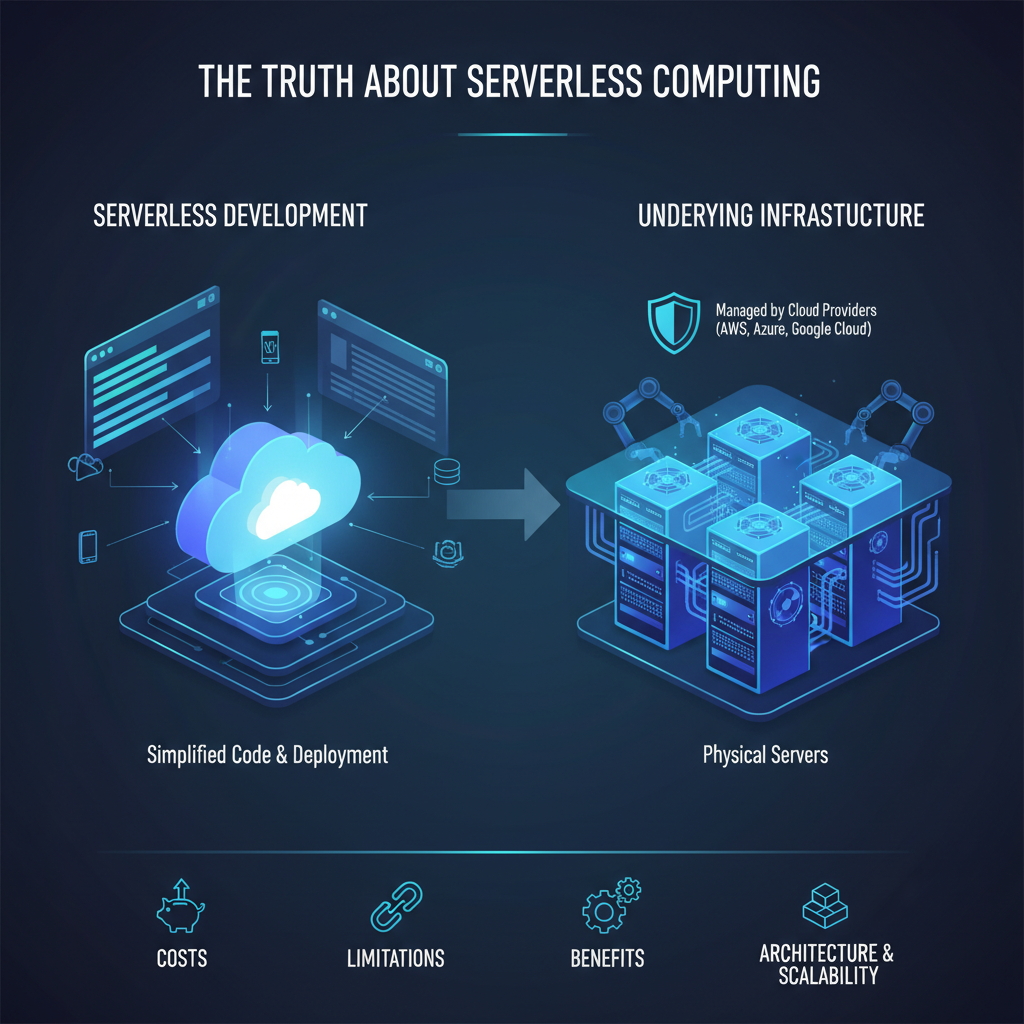In my 25+ years of navigating the ever-evolving landscape of technology, I've witnessed countless trends emerge, promise revolutionary change, and then settle into their rightful, often nuanced, place. Serverless computing is one such paradigm that has captured the imagination of developers and business leaders alike. It promises unparalleled agility, scalability, and cost efficiency, especially across dynamic markets from the innovation hubs of India to the mature enterprises in Europe, the US, and Australia. But here's the crucial question: are we truly understanding what serverless entails, or are we just captivated by the allure of 'no servers'?
As the founder and CEO of IndiaNIC, I've guided countless clients through their digital transformation journeys, helping them distinguish between genuine technological leaps and mere buzzwords. My perspective is always rooted in strategic ROI and sustainable growth. So, let's peel back the layers and uncover the truth behind serverless computing. It's a powerful tool, no doubt, but like any powerful tool, its true potential is unlocked by those who understand its mechanics, not just its marketing.
The Serverless Promise vs. Reality: Where Do the Servers Go?
The term 'serverless' itself can be misleading. It doesn't mean your code runs without servers; it simply means you, the developer or business owner, no longer have to provision, manage, or maintain those servers. The cloud provider - be it AWS, Azure, Google Cloud, or others - takes on that immense responsibility. This abstraction is serverless computing's core magic. Your focus shifts entirely from infrastructure management to writing code that delivers business value. We've seen this greatly accelerate development cycles for startups in the Middle East and established firms in the UK, keen on rapid iteration.
"Serverless isn't about the absence of servers; it's about the liberation from server management. This distinction is crucial for leaders evaluating its strategic value, not just its technical appeal."
- Sandeep Mundra, CEO, IndiaNIC Infotech Limited
Unpacking the Benefits: Why Serverless Entices Developers and Leaders
When adopted correctly, serverless offers compelling advantages:
- Reduced Operational Overhead: No patching, no scaling decisions for servers, no worrying about underlying OS. This saves valuable developer time and resources.
- Automatic Scalability: Your application scales automatically with demand, from zero to thousands of requests per second, without manual intervention. This is a game-changer for applications with unpredictable traffic patterns, which is common in e-commerce or event-driven systems.
- Pay-per-Execution Cost Model: You only pay when your code is running. This can lead to significant cost savings for intermittent workloads or applications with variable usage, a key consideration for businesses in cost-conscious markets like India.
- Faster Time-to-Market: Developers can focus purely on logic, enabling quicker iteration and deployment of new features.
In the early days of IndiaNIC, we once tackled a client project in the logistics sector that experienced massive, unpredictable spikes in demand during peak holiday seasons. Their traditional server architecture struggled to cope, leading to outages and lost revenue. When we introduced a serverless approach for their order processing pipeline, the transformation was remarkable. The system seamlessly handled millions of transactions without manual scaling, drastically reducing their operational costs and improving customer satisfaction. It was a tangible demonstration of serverless power in action, turning a critical vulnerability into a competitive advantage.
The Undeniable Trade-offs: Limitations and Challenges
No technology is a silver bullet, and serverless has its caveats:
- Cold Starts: If a function hasn't been invoked recently, there's a delay as the cloud provider initializes its environment. This 'cold start' can impact latency-sensitive applications.
- Vendor Lock-in: Serverless offerings are highly specific to each cloud provider. Migrating between AWS Lambda, Azure Functions, or Google Cloud Functions can be challenging.
- Debugging and Monitoring: Distributed serverless architectures can be harder to debug and monitor compared to monolithic applications, especially across disparate services.
- Resource Limits: Functions often have limitations on memory, execution time, and package size. While generous, they can be a constraint for compute-intensive tasks.
Beyond the Hype: Understanding Real Costs and ROI
While the pay-per-execution model often translates to lower costs for many workloads, it's not always a guaranteed saving. Without careful architectural design and monitoring, serverless costs can accumulate rapidly, especially with high-volume, continuously running functions or complex orchestrations. I recall a client in Australia who, initially thrilled with serverless, saw their bills climb when they failed to optimize their function invocations and memory allocations. It's not just about the cost per invocation; it's about the total cost of ownership, including development, testing, and continuous optimization.
💡 Pro Tip: Always conduct a thorough cost analysis. Factor in data transfer, API gateway calls, and database interactions, not just function invocations. Use cloud provider cost calculators and monitoring tools religiously.

Building Smarter: Why Infrastructure Awareness is Your Superpower
The true power of serverless lies in its abstraction, allowing developers to focus on higher-level logic. However, understanding that physical servers *do* exist and how the cloud provider manages them is not just academic; it's strategic. This awareness helps you:
- Optimize Performance: Knowing about cold starts can influence how you structure functions or use provisioning options.
- Manage Costs Effectively: Understanding the underlying resource allocation helps you optimize memory, CPU, and execution duration.
- Architect for Resilience: Designing for failure scenarios becomes more informed when you appreciate the distributed nature of the infrastructure.
- Make Informed Architectural Decisions: You can intelligently decide when serverless is the right fit and when a containerized or VM-based approach might be better, especially when scaling complex SaaS platforms across diverse user bases in regions like the US or Europe.
Ultimately, serverless computing is a paradigm shift. It simplifies development by abstracting away infrastructure, empowering teams to build faster and more efficiently. But this simplification shouldn't breed ignorance. As a leader guiding innovation, I constantly preach the importance of foundational understanding. The more you grasp the mechanics behind the magic, the better equipped you are to harness its true potential for scalability, efficiency, and sustained business growth. Embrace serverless, but do so with open eyes and a strategic mind.
Key Takeaways
- Serverless abstracts server management; physical servers still exist and are managed by cloud providers.
- Benefits include reduced ops, auto-scaling, and pay-per-execution, ideal for variable workloads.
- Limitations like cold starts, vendor lock-in, and debugging challenges need careful consideration.
- Real costs require comprehensive analysis beyond just invocations; optimize for actual usage.
- Deep infrastructure understanding empowers smarter architectural, performance, and cost decisions.










